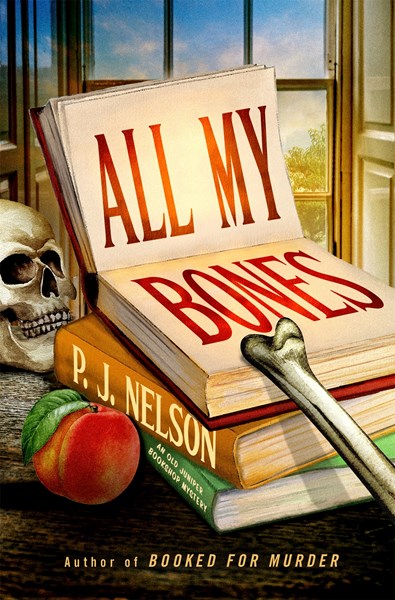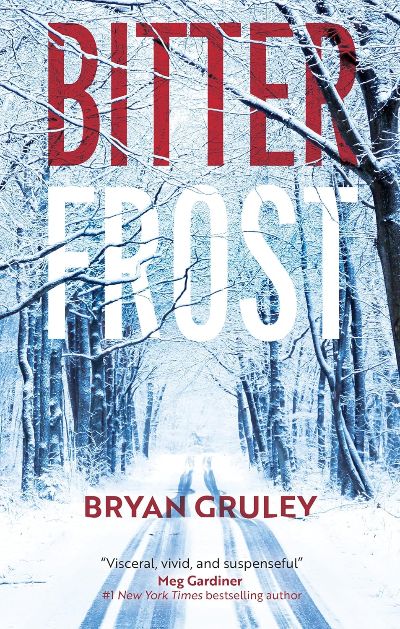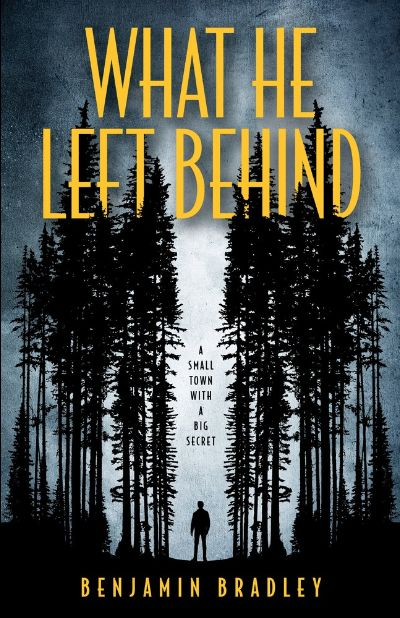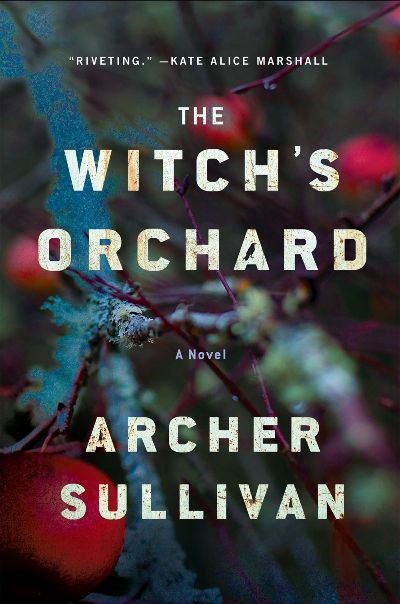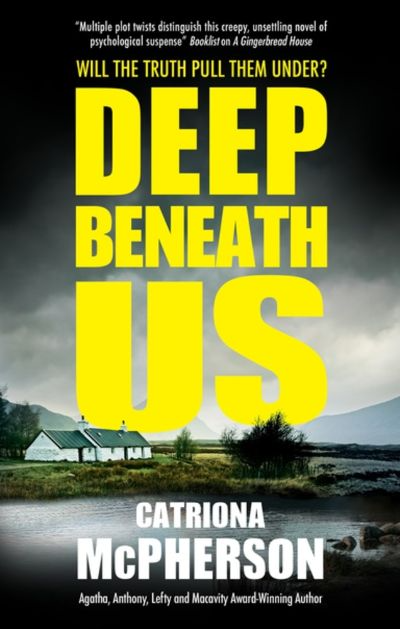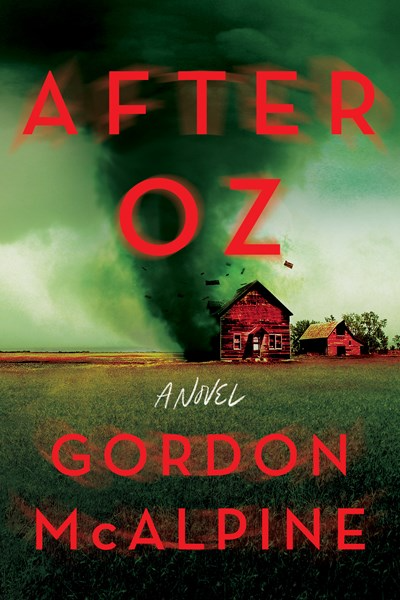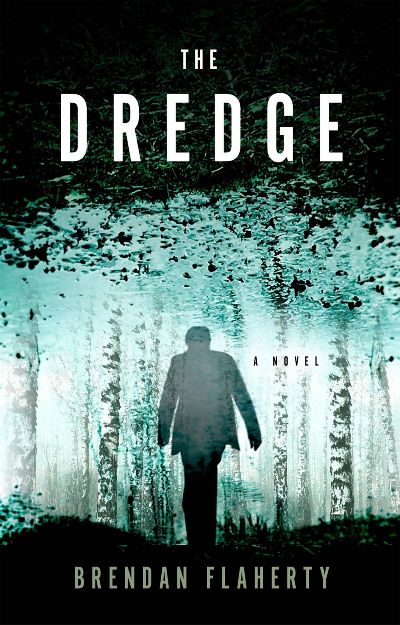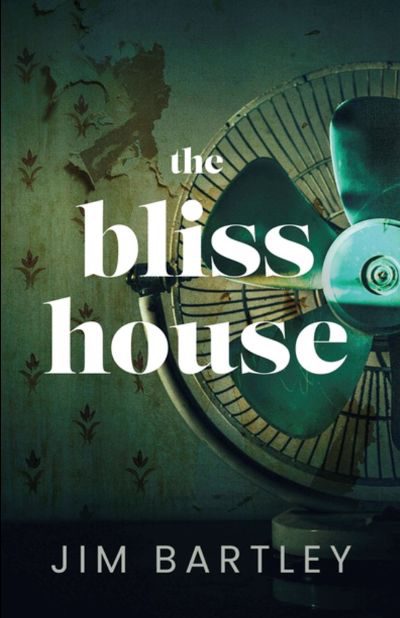Quirky and quick-witted, this second mystery in the Old Juniper series manages to be both action packed and full of the rich details that make up small-town life. Madeline Brimley is back in her hometown of Enigma, Georgia (“A little do-nothing town in the worst part of the third-worst state in the country”). A former actor, Madeline inherited her aunt’s home/bookstore and has no problem making new friends, although her bestie would be Gloria Coleman, the Episcopal priest who lives right across the street. When a corpse is found in the front yard of the bookstore, of all places, it turns out to be that of the rich and nasty Bea Glassie. And while no one in town can stand Bea, it’s Gloria who takes the heat for killing her and ends up in the slammer—while Madeline and friends are cavorting about town, interviewing suspects, cooking dinner, and in general living it up. Madeline even manages to get herself a boyfriend (a poet and horticulturalist. How cute is that?) Gradually the mystery starts to fall in place, characters step up to their roles, and the world eventually settles back into a familiar place.
Small Town & Rural
Their messiness portrayed with cringe-inducing accuracy, hapless characters strive to survive what life throws at them—and it’s a lot—in Edgar-nominated Jaworowski’s latest. Reed, a young man who’s autistic, has just lost the person at the center of his life. He wants to do the right thing, and…kind of…wants to do what his brother, who is his guardian, asks, but surely a little excursion to keep a promise won’t hurt anyone. Then there’s Billy, another resident of Locksburg, PA, who needs his single-mother’s help to hide one of the bodies of the title. It’s not a fresh body, leading to some gruesome scenes but mostly to edge-of-your-seat moments as the two struggle to stop their lives from sliding even deeper into darkness. Trying to escape the town is Liz, a musician who’s taken up with a local bad boy who, you guessed it, gets both of them into trouble just as she’s on the brink of getting out. These all-too-realistic lives collide in a memorably character-driven story whose dialog—especially that of Liz—will make readers laugh even as they despair that anything can ever go right in Locksburg. Plenty of readers love a small-town thriller and this one’s just the ticket.
Bitterfrost, Michigan, is a town that revolves around hockey—a rich local family, the Paynes, owns the adored IceKings team and the rink they play at—and nights frittered away at the Lost Loon, a dismal watering hole. Jimmy Baker works at the rink driving the Zamboni, which keeps him in the sport he loves even after his minor league career stalled. Jimmy was the guy the manager could rely on to take out members of the opposition, but it went too far and now he drives Zelda, enjoying small-town celebrity and missing the daughter his ex keeps from him. Then he wakes up sore all over and with a bloody face, black eyes, and drag marks in the snow outside his house. With no idea what happened—didn’t he have only one drink at the Loon?—he tells others he slipped on his porch, knowing it’s likely a lie and that his history means it was much worse. When a body is found in a burned car outside town, he fears the worst and is soon sitting in court. Defending him is Devyn Payne, daughter of the rink owner, who has a past of her own—a notorious court case that the town can’t forgive her work on. The defendant and attorney find themselves in the crosshairs of both town gossip and further violence, with all ending in an engrossing courtroom scene. This is the first in a series, thankfully, as readers will want to visit this chilly-in-every-way community again.
Oak Hill, NC is a town where nothing much in the way of crime happens. Then, in the space of a few days, there is murder, robbery, and arson. Jacob Sawyer, someone who hasn’t been seen for 15 years, is back in town, though no one thinks he is the cause. Grace Bingham, local police detective and Jacob’s abandoned love interest from before, is under time pressure to solve the crimes without offending anyone important. Jacob’s back because his mother, beloved in the town, is dying of cancer; Calvin Dockery, an extremely wealthy local who pulls all the strings, is also dying. The current crimes harken to unexplained events of the past that caused Jacob to leave. The story moves from the present to the past and back again, gradually revealing what happened. Grace and Jacob are undeterred in their search to connect what is happening now with what happened in the past regardless of who is involved. Money is power, and power is very dangerous here, and those with it are willing to spare no one. Resolution is not easy, but very satisfying in a book with a great deal of atmosphere and local resonance.
We don’t know anything about Annie when Max hires her to find his sister, Molly. Molly has been missing for 10 years, and Max has been saving all that time to hire a PI. Max is from rural Kentucky, as is Annie—from a different part, but close enough to matter. Ten years ago, three little girls went missing and were replaced by applehead dolls: Jessica; then Olivia, who was returned; then Molly. Olivia, autistic and non-verbal, has never been able to convey anything that happened. No one but Max and Jessica’s mother wants answers, it seems, but Annie is as dogged as the job requires. As we unravel what the town is about, we also unravel this investigator and find that her past and her ethos blend nearly seamlessly with what she finds. Corruption; abuse; meth labs surrounded by achingly beautiful landscapes; wonderful, goodhearted, traditional people; and downright creeps make up the puzzle she needs to unravel. In a wonderful combination of mountain lore and history, false heroes and major new friends, readers see a picture of backwoods Kentucky that is authentic and engaging. It would be wonderful to see more from this author.
Tabitha is compelled by the spiteful actions of her ex-husband to move back to her childhood home. This is not a cozy, safe space as one might hope. It is a sort of compound: two schoolhouses on different sides of a reservoir, one occupied by her family, the other by her uncle’s family. In the past, four cousins, Tabitha the youngest, ran and played like a pack. But her mother is an unstable artist, her father and uncle killed themselves, and her sister and cousin married each other at age 16. Now, cousin Davey purportedly dies by suicide as well, leaving his property to Tabitha. But is that what really happened? Davey’s two cronies, along with three smart teens, use skills learned from TV crime dramas and DNA analysis to get to the bottom of it all. The characters are captivating, the atmosphere is dark and dour, and the wretched weather contributes to the overall tone of the book. The novel is set in Scotland and the use of Scottish dialect and expressions is sometimes daunting, but never gets in the way of the telling. To say that the plot here is a tangled mess may be an understatement, but the untangling is a treat.
A wonderful addition to the literature of The Wizard of Oz, this novel focuses on 11-year-old Dorothy Gale, “dreamy, distant, difficult,” and her eventual return to Kansas via a pumpkin field, where she is found sleeping. Poor Dorothy didn’t know the drill—she was insistent on the reality of the fantastic land she had left, with “talking beasts, flying monkeys, and a wizard”—when she should have been accusing the Oz citizenry as being ungodly pagans. But it’s Dorothy’s admission that she murdered (actually melted) the witch, and the discovery that a leading, witch-like townswoman, Alvina, has also been murdered (melted by lye), that sends Dorothy off to the Topeka Insane Asylum. Fortunately for Dorothy, the town is visited by Dr. Evelyn Grace Wilford, a student of William James, who faces the misogyny and Christianity of the townspeople to learn the truth of what really happened to Dorothy Gale. A delight from start to finish.
Taylor’s debut cozy hits all the beloved genre touchstones. There’s an offstage murder in a small town, baking, cats, a small business…cozy indeed! But the author adds a little spiciness to the relationships, making the book ideal for fans of the subgenre and those who love Taylor’s romantic-comedy What’s Not trilogy. The action takes place in Chatham Crossing, Massachusetts, where the self-proclaimed first lady is…well, that’s the subject of a friendly rivalry. Carole Duffy, the mayor’s wife, seems to have the most legal claim to the title. But if vivacity crowns the winner, the title would go to Venus Bixby, owner of a local vintage record and bake shop, Oldies and Goodies (home to cats Sonny and Cher and to Carole’s delicious cookies). Everyone who’s anyone is ready for Venus’s 50th birthday bash at the town’s big attraction, the Sofia Silva Whaling Museum, but the festivities grind to a halt when Venus falls over a distinct pair of orange platform shoes in the garden, shoes that are being worn by the dead owner of the museum’s gift shop. The sleuthing is on, with Venus, friends, and rivals excelling at small-town bitchiness even as suspects are ticked off the list. Watch for this fun first in a series, which comes with recipes and a playlist.
“Some families are haunted. The stuff of the past, the traumas and the ghosts—they just go on and on,” thinks Caleb “Cale” Casey, a successful real-estate broker in Hawaii who has been estranged for almost 30 years from his brother Ambrose, who runs a construction company back in their small Connecticut hometown. Both are tormented by a terrible secret that they buried as teenagers in Gibbs Pond. When a real-estate developer announces plans to dredge the pond in preparation for further development, Cale reluctantly returns home. Unbeknownst to the brothers, Lily Rowe, the contractor in charge of the dredging, also suffers from a dark family history, a childhood of abuse and neglect, shared with her troubled sibling Ray, that led to a shocking act of violence. How these well-drawn traumatized characters and their secrets collide in the present day, permanently changing the course of their lives, is the theme of Flaherty’s beautifully written debut. His Connecticut is not the monied suburbia of Rick Moody and John Cheever, but a rural working-class community more reminiscent of Daniel Woodrell’s Ozark mountain towns. After a strong buildup, the conclusion felt a bit anticlimactic. Still, this sad novel about the corrosive effects of family trauma and pain will linger in readers’ minds.
In the rural Ontario Bliss House live 17-year-old Cam; his cousins Wes, who’s in his late twenties; and Dorie, who’s five and is a distant relative Gramp and Gran took in. Gran died a few months ago and her abusive, alcoholic spouse not long after, but Gramp is not quite gone, his corpse hidden under a tarp in the house’s cold room. With no will leaving the house and farm to the remaining family, what else can they do? Wild-child Dorie is able to keep Gramp’s death a secret, as well as her knowledge of the game Cam and Wes play in Wes’s bedroom, the same one, she thinks, the nasty neighbor boy, Kyle, wanted to play with her in the barn. The ramshackle family is just starting to believe things are safe when Kyle’s mother sets the Misses Gurney on them. Beulah and Audrey Gurney are with Bethel Baptist and Dorie’s attire—or lack of it—when she plays in the yard is, they say, “the Lord’s business.” They brush Kyle’s behavior aside (“They’re Pentecostal”) but cannot see their way to ignoring Wes and Cam’s “sin,” launching the Bliss boys on a startlingly violent and engrossing path to keep their family and love safe from the state. Young adults as well as adult readers who aren’t squeamish (terms like “corpseooze” stand out) will root hard for this loving family and stay up to find out how their bizarre, Murphy’s-law-ridden odyssey turns out. Playwright Bartley’s previous fiction is set in Balkan war zones, making this memorable work a fresh start.

